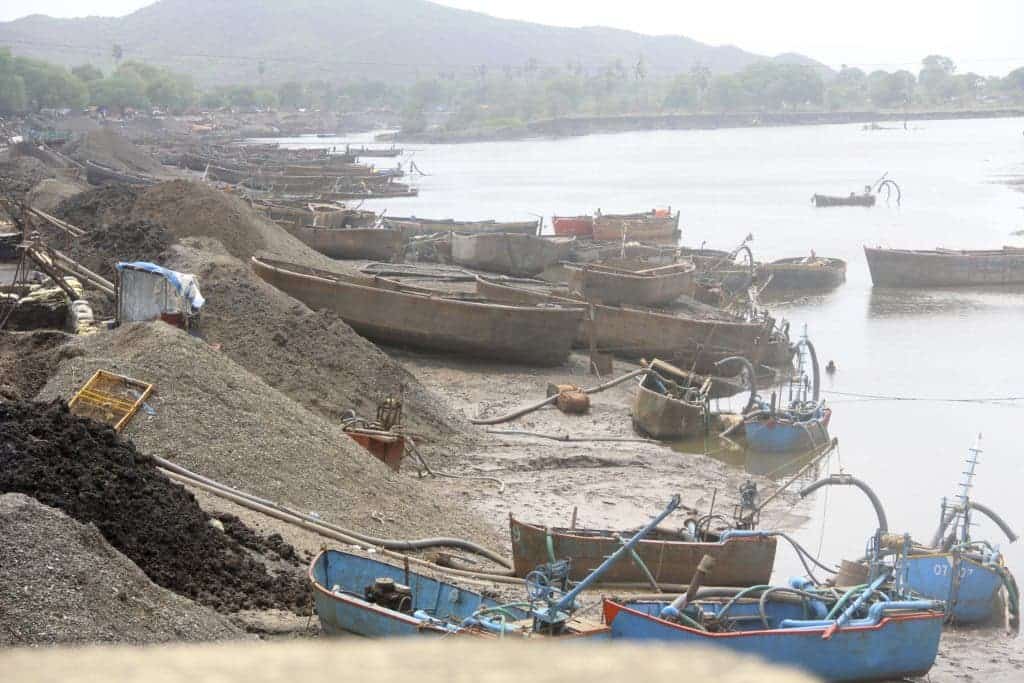When you think of world shortages perhaps, the first ones that come to mind are water and natural gases. However, there’s a not-so-obvious shortage that is close at hand: sand. Yes, that’s right — the seemingly abundant particles of stone or coral that line beaches and deserts are running low. The biggest reason for this impending shortage is that we use sand for constructing almost everything and it is beginning to cause all sorts of problems.
The problem
Cities and urban areas are expanding at a dizzying pace. Materials are needed to build the streets and buildings; that’s where sand comes in. It is an essential ingredient for concrete, asphalt, and glass, which is most of what goes into a building. Even the silicon chips in electronics are made with sand. Coastal development, along with climate change, only increases the amount of sand needed to replenish coasts.

Sand is also used in fracking as a proppant to keep the fractures in the rock open and extract natural gas. Demand for sand will only increase in the next years and the replenishment rates are not high enough to meet this growing demand. There are many sand deposits all over the world, but only a fraction is suitable for use in construction. This suitable sand is spread over rivers and coasts and is dwindling because of the sheer amount that is currently being extracted.
“Not all the sand that we see is suitable for construction, and in particular the sand from deserts like the Sahara, in general, is not good for making concrete as it substantially reduces its strength — the grains of desert sand are too round, fine and single sized. For concrete, a diverse mix of irregular grains of sand is much better. There are many research teams trying to find ways to use desert sand but the techniques that are being developed use more energy, are more expensive and generate more greenhouse gases. Other deserts don’t have as much sand as we might think, like the Gobi desert. The most common alternative is the other major construction aggregate, crushed stone, but again it is more expensive and not all areas have the suitable type of stones,” said Dr. Aurora Torres, a post-doctoral researcher at the German Centre for Integrative Biodiversity Research, to ZME Science. She is the lead author on a paper published last month in Science about the sand crisis.

Tragedy of the commons
Sand and gravel are actually the most commonly extracted resources worldwide upon considering the sheer amount. This amount is even more than fossil fuel — 2.6 gigatons per year in 2010. The reason why a problem is brewing is that sand is a freely available and difficult to control resource but is also in incredibly high demand. When you mix these two things together, you get a tragedy of the commons. This is an economic theory that states that when sharing a resource, individuals act for their own self-gain instead of the common good and will destroy or use up the resource.

Although sand scarcity is just coming to our attention as a global issue, it has been happening on a smaller scale for longer.
“In the early 1900s in Hong Kong, the government established a state monopoly over sand mining and trade to respond to the rampant violence stemming from a ferocious competition for sand. So at a smaller scale, sand over-exploitation has happened before,” said Dr. Torres.
In some areas of the world, sand is already becoming scarce.
“In Vietnam, the ministry of construction made an official declaration that by 2020, Vietnam may run out sand because the extraction rates exceed the resources of the country. They are thinking of importing sand from other countries nearby when up to now they have been exporting sand,” said Dr. Torres.
Consequences
Extracting sand from the different sources, such as rivers, beaches, and seafloors, damages ecosystems and their ability to function. Mining can, therefore, put pressure on and destroy habitats and food webs. Invasive animals, such as the notorious Asian clams, can also hitch a ride on the boats that transfer sand, which is bad for biodiversity and has huge economic costs.
Sand mining makes coastal populations more vulnerable to storms and tsunamis. In Sri Lanka, sand mining made the effects of the 2004 Indian Ocean tsunami worse and ironically increased the demand for sand after the restoration of the beach and the destroyed infrastructure.

There are many other indirect negative effects of sand mining, such as increased saltwater intrusion on croplands and creating more still-standing water pools that are breeding grounds for mosquitoes spreading malaria. There is so much money to be made in the sand trade that in some countries, like India, there’s even a “sand mafia” that organizes it and is very powerful and violent. The sand trade can lead to other conflicts and tensions.
Solutions
“We need to improve recycling techniques; this is an alternative for areas that are already developed, from buildings that are not being used to make new buildings. Unfortunately, in developing countries, recycling will not meet the demand. We need international conventions to regulate sand extraction and trade at the global scale to make a more sustainable use of sand,” said Dr. Torres.
All in all, the way that sand extraction is currently organized (or not organized) is bad — for the environment and for the people. If it continues this way, there will be shortages. Governments should intervene to make sand use and trade more efficient. Planning and control need to come into play to make this a resource that we can use in the future. All of our buildings are really just sand castles, built with an increasingly scarce resource.
Read more: Torres, A., Brandt, J., Lear, K. & Liu, J. (2017) A looming tragedy of the sand commons. Science 357, 970 LP – 971.






